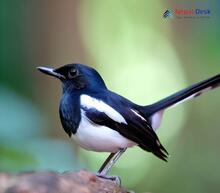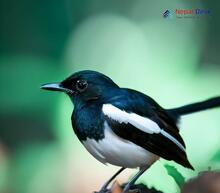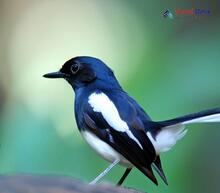The Copsychus genus of passerine birds, which belong to the Muscicapidae family, has long captivated ornithologists and bird enthusiasts alike. These intriguing avian species boast extraordinary features that distinguish them in the animal kingdom. In this article, we will venture into the various facets of the Copsychus genus - covering their evolution, taxonomy, morphology, and ecology - while giving special attention to their existence in Nepal.
Decoding the Evolutionary Tree and Taxonomy
Copsychus species belong to the Old World flycatcher family (Muscicapidae) and have evolved over millions of years into their current forms. Though genetic research concerning this genus remains in its early stages, preliminary findings hint that Copsychus species are closely related to several other genera within the Muscicapidae family.
Owing to its abundant species distributed across Asia and Africa, Copsychus' taxonomy is rather complex. Some of the most renowned species include the Oriental Magpie-robin (Copsychus saularis), White-rumped Shama (Copsychus malabaricus), and Seychelles Magpie-robin (Copsychus sechellarum). Each bird showcases distinctive physical features, behaviors, and habitat choices that correspond to its classification within this genus.
Morphology: Defining Physical Traits
Typically ranging from around 15 to 28 centimeters, Copsychus species are small- to medium-sized passerine birds. Many species boast eye-catching plumage patterns that display black-and-white or different shades of brown. Males often have longer tail feathers compared to females. Together, their vibrant plumage patterns and enchanting songs make Copsychus birds a delightful sight in their natural habitats.
Ecology: The World of Habitats and Feeding Patterns
Copsychus birds are found in various environments, from dense forests to urban gardens throughout Asia and Africa. These adaptable creatures feed on a diverse array of insects and small fruits, making them crucial components of different ecosystems. In addition to feeding, Copsychus species aid their surroundings by dispersing seeds and controlling insect populations, ultimately contributing to the overall health of the ecosystem.
Nepal's Avian Wonders: The Link to Copsychus
Nepal's diverse climate and ecological zones create a haven for abundant bird species. The Oriental Magpie-robin (Copsychus saularis), a Copsychus family member, can be spotted across Nepal in lowland forests and cultivated regions. Known for its mesmerizing song, local bird lovers often keep them as pets. The Oriental Magpie-robin not only contributes to Nepal's rich biological heritage but also highlights the need for preserving these birds' unique habitats.
To wrap up, the Copsychus genus constitutes a fascinating branch within the Muscicapidae family with extraordinary evolutionary backgrounds, varied taxonomic classifications, distinct morphological features, and crucial ecological roles. By examining these captivating birds and recognizing their importance in ecosystems like Nepal's, we gain a deeper appreciation for the intricate web of life they're part of - an insight that drives us to preserve our planet's awe-inspiring biodiversity for future generations.




